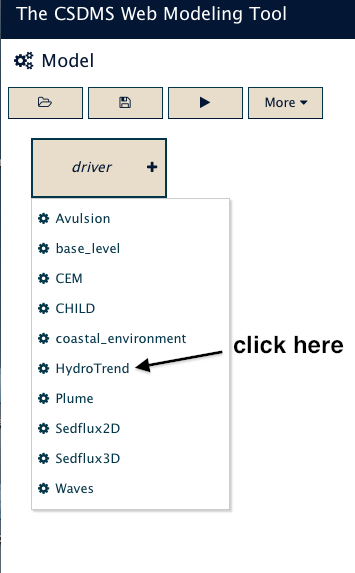Labs WMT Ganges Sediment Supply
Modeling the Future Sediment Flux of the Ganges River with HydroTrend
If you have never used the Web Modeling Tool, learn how to use it here. The WMT allows you to set up simulations, but once you are ready to run them, you will need an account on the CSDMS supercomputer to submit your job.
More information on getting an account can be found here Beach HPCC Access
The Ganges-Brahmaputra Delta is one of the largest deltas in the world. In Bangladesh alone, 160 million people live in the floodplains. The Ganges and Brahmaputra Rivers and their delta are strongly impacted by the Asian summer monsoon. Widespread hazards relate to the intense seasonal rainfall: flooding, river erosion and channel switches. The people of Bangladesh have adapted to this dynamic delta system, they have raised villages above the annual flood level and embanked agricultural land.
Still, the lowlands of the Ganges-Brahmaputra Delta are considered one of the regions most at risk from climate change, and particularly from sea level rise. About 75 million people live in the GB coastal zone (defined as the region <10 m.a.s.l). It is thought that the impact of relative sea-level change will be profound in Bangladesh where 32% of the country is already affected by tides, salinization, and cyclones/storm surges.
At the same time, the Ganges-Brahmaputra river system drains tremendous amounts of sediment (sand, silt and clay) from its steep Himalayan hinterland. We ask: does this sediment aggrade fast enough to help counteract rapid sea-level rise?
This lab investigates 1) the modeling of the incoming water and sediment load of the Ganges river, 2) the validity of model output compared to real-world observations, and 3) how future changes in the monsoon possibly affect this sedimentary system and 4) we try to assess the uncertainty of such predictions.
>> Open a new browser window and open the Web Modeling Tool CSDMS WMT
>> In WMT open the ‘public’ example ‘HydroTrend_Ganges’.
>> HydroTrend will now be active in the WMT. The HydroTrend Parameter list is set to be representative for the Ganges river basin. This project can be saved to your saved projects and submitted to Beach-the CSDMS High Performance Computing System. Provide your Beach account information (i.e. user name and password) to get the run started. The status page allows you to keep track of a simulation. From the status page you can eventually download your output files.
Exercise 1: Explore the Ganges river simulation
>> Now save and run the simulation!
>> Download the output files from the status window. You can download the netCDF files and use VisIT to visualize your results, or grab the HydroTrend ASCII files and use Excell or Matlab to import the data.
Question 1a Calculate mean water discharge Q, and the total annual Q, as well as the mean suspended load Qs and the total annual suspended Qs. Note all values in the file are reported as daily averages. Q= m3/s, Cs=kg/m3, Qs =Qb = kg/s.
Question 1b
Jian et al., (2009) indicate the mean annual discharge of the Ganges river is : Q=1.14 * 104 m3/sec (Jian et al., 2009). How does the model prediction compare?
Question 1c Calculate the mean annual sediment load for this river system.
Exercise 2: How does the Ganges river respond to future climate change; a few simple scenarios for the coming century.
>>Does the defined basin-average for the annual rainfall appear to be correct? Please try to find a precipitation estimate in the following paper: Pervez and Henebry, 2014. Projections of the Ganges–Brahmaputra precipitation—Downscaled from GCM predictors. Journal of Hydrology 517 (2014) 120–134.
>>Use the precipitation tabs to modify the mean annual precipitation P, and its the variability of the yearly means through the standard deviation. As we did in the general HydroTrend lab, you can specify trends over time, by modifying the parameter ‘change in mean annual precipitation’. In addition, you learned you can adapt seasonal trends by using the monthly values.
>> Set up a simulation for the Ganges river basin with an estimate for future precipitation based (a simulation of 2000-2050). Describe your strategy for doing so.
Question 2a How does the predicted water and sediment load change?
How would you assess your uncertainty in the model predictions? Can you separately assess the error for the model input, and the error of the model equations? Describe how you would do this.
Exercise 3: How does the change in sediment flux affect aggradation
>> Can you make a back-of-the-envelop calculation to see how the change in sediment load affects the elevation of the GB delta. Use figure 2.

